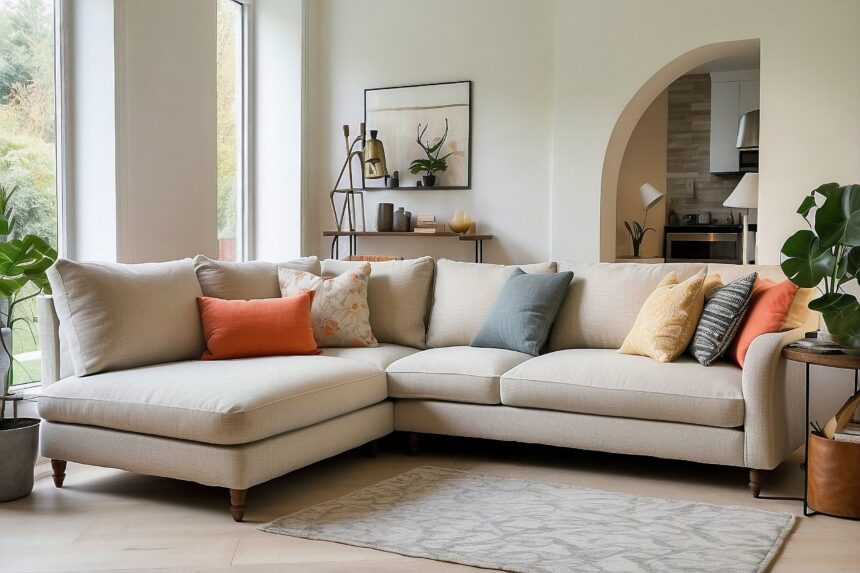Corner sofas have become increasingly popular in recent years, particularly in smaller living spaces where maximizing space and functionality is essential. These versatile pieces of furniture not only provide ample seating but also serve as a focal point for the living area. However, arranging a corner sofa effectively in a small room requires careful consideration of several factors, including the room’s layout, the desired ambiance, and the occupants’ lifestyle.
10 Small Corner Sofa Arrangement Ideas:
1. Define the Focal Point
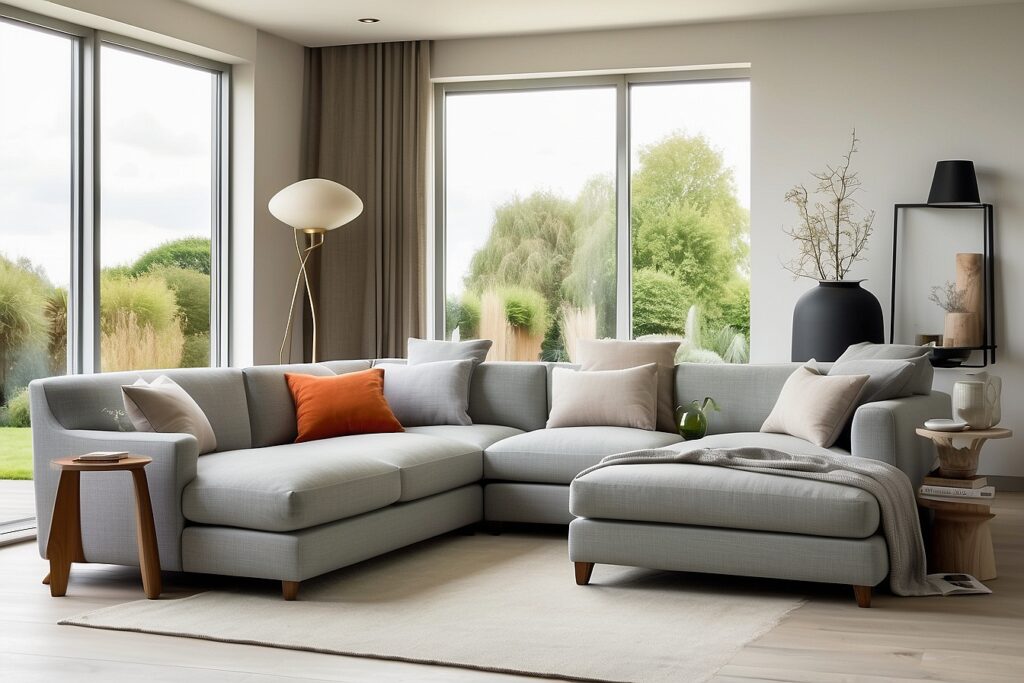
The first step in arranging a corner sofa in a small living room is to determine the primary purpose of the space. Is it intended for conversation, entertainment, or relaxation? Once the focal point is established, the corner sofa can be positioned accordingly to enhance the room’s flow and functionality.
For instance, if the living area is primarily used for conversation, the corner sofa should be placed to create a cozy and inviting seating arrangement. This could involve positioning the sofa facing a fireplace or a large window or creating a conversational grouping with armchairs or ottomans.
On the other hand, if the living room is designed for entertainment, the corner sofa can be oriented toward television or a home theater setup. This arrangement ensures that everyone has a clear view of the screen while maintaining a comfortable viewing distance.
2. Utilize the Corner Effectively
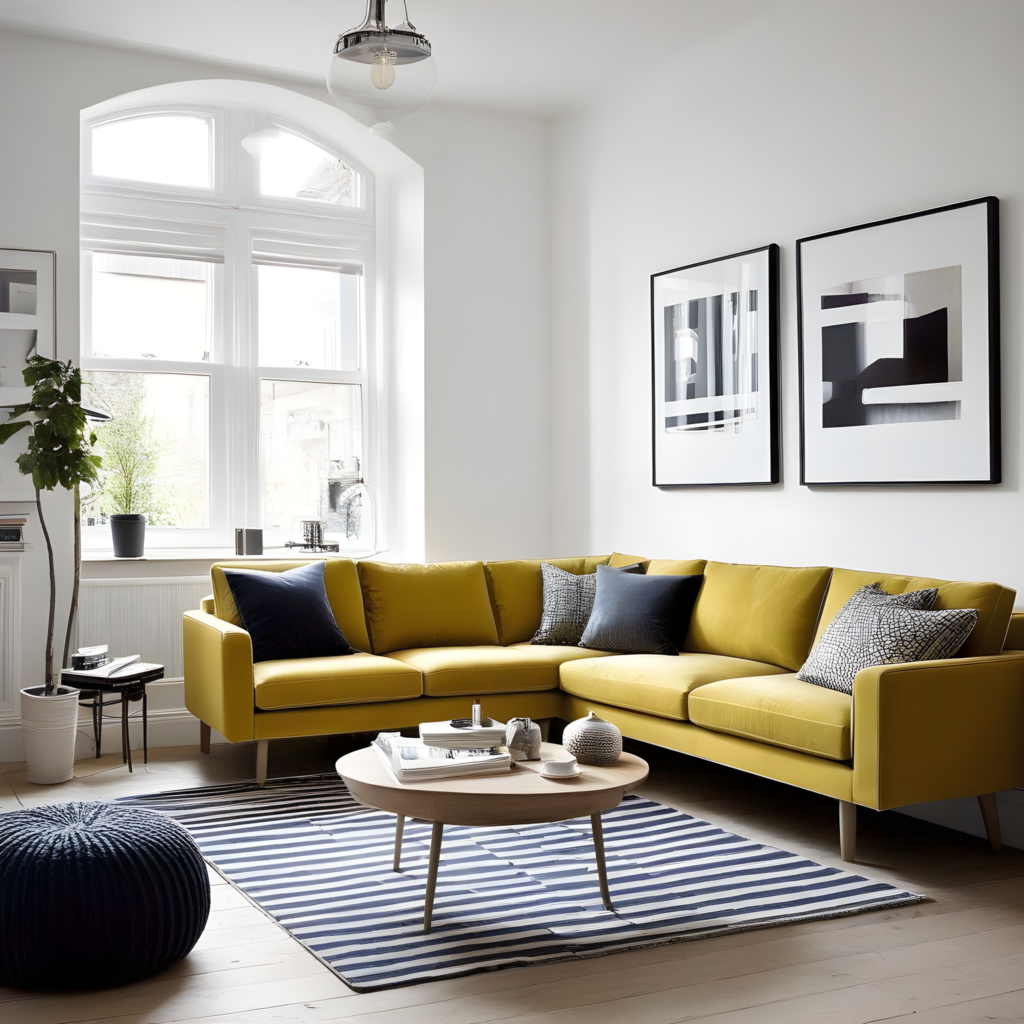
Corner sofas are specifically designed to fit snugly into the corner of a room, making them ideal for maximizing space in smaller living areas. However, the specific corner placement should be carefully considered to ensure that the sofa does not obstruct traffic flow or disrupt the overall layout of the room.
In some cases, the corner sofa may be best positioned opposite the entryway, creating a welcoming and inviting atmosphere as guests enter the living space. Alternatively, the sofa could be placed adjacent to a window, providing ample natural light and a scenic view.
3. Create Defined Seating Zones
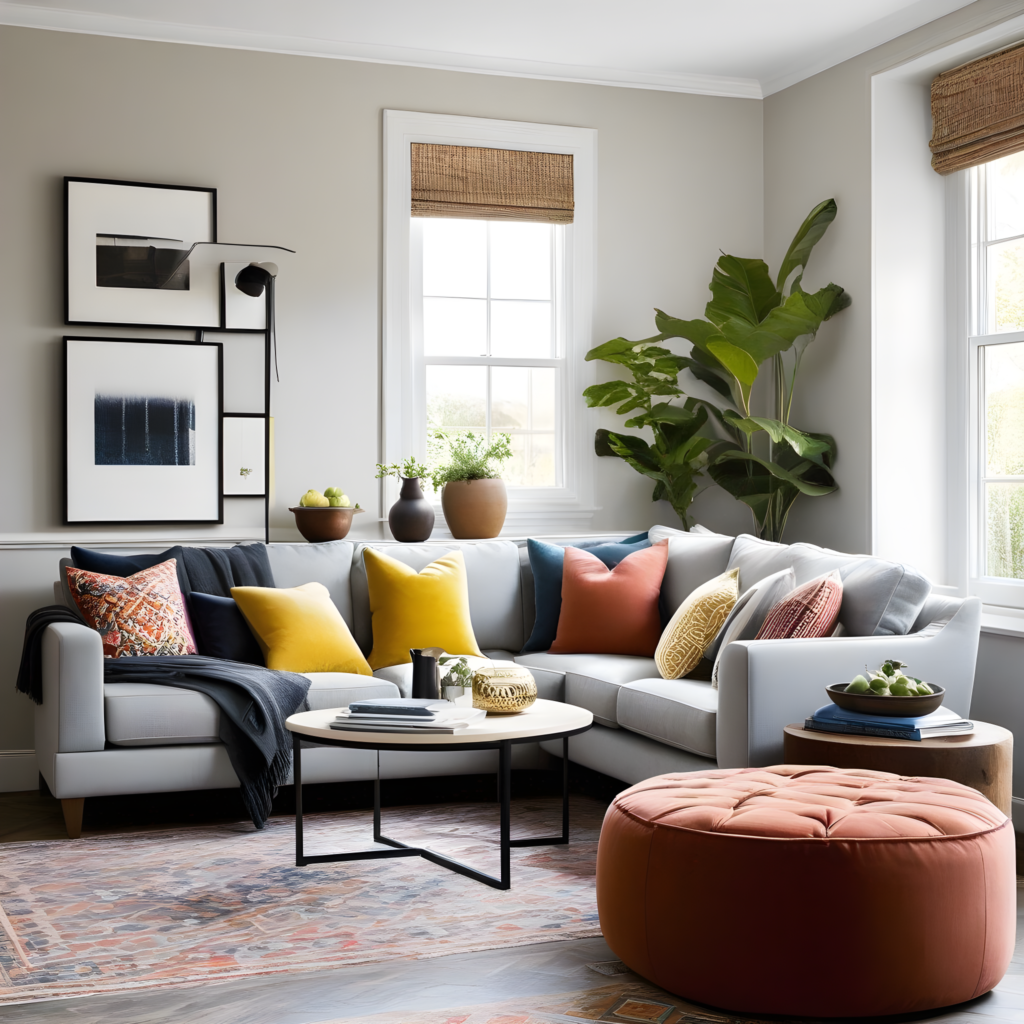
While corner sofas provide ample seating on their own, additional seating options can further enhance the functionality and versatility of the living space. Accent chairs, ottomans, and beanbags can be strategically placed to create distinct seating zones, catering to different activities and preferences.
For example, an accent chair could be positioned next to the corner sofa, creating a cozy reading nook. Ottomans can serve as additional seating or footrests, while beanbags offer a casual and relaxed seating option.
Rugs and area dividers can also be utilized to further define the different areas of the living space. A rug placed in front of the corner sofa can help anchor the seating arrangement, while an area divider can create a sense of separation between the living area and other functional zones, such as a dining area or a home office.
4. Embrace Flexibility
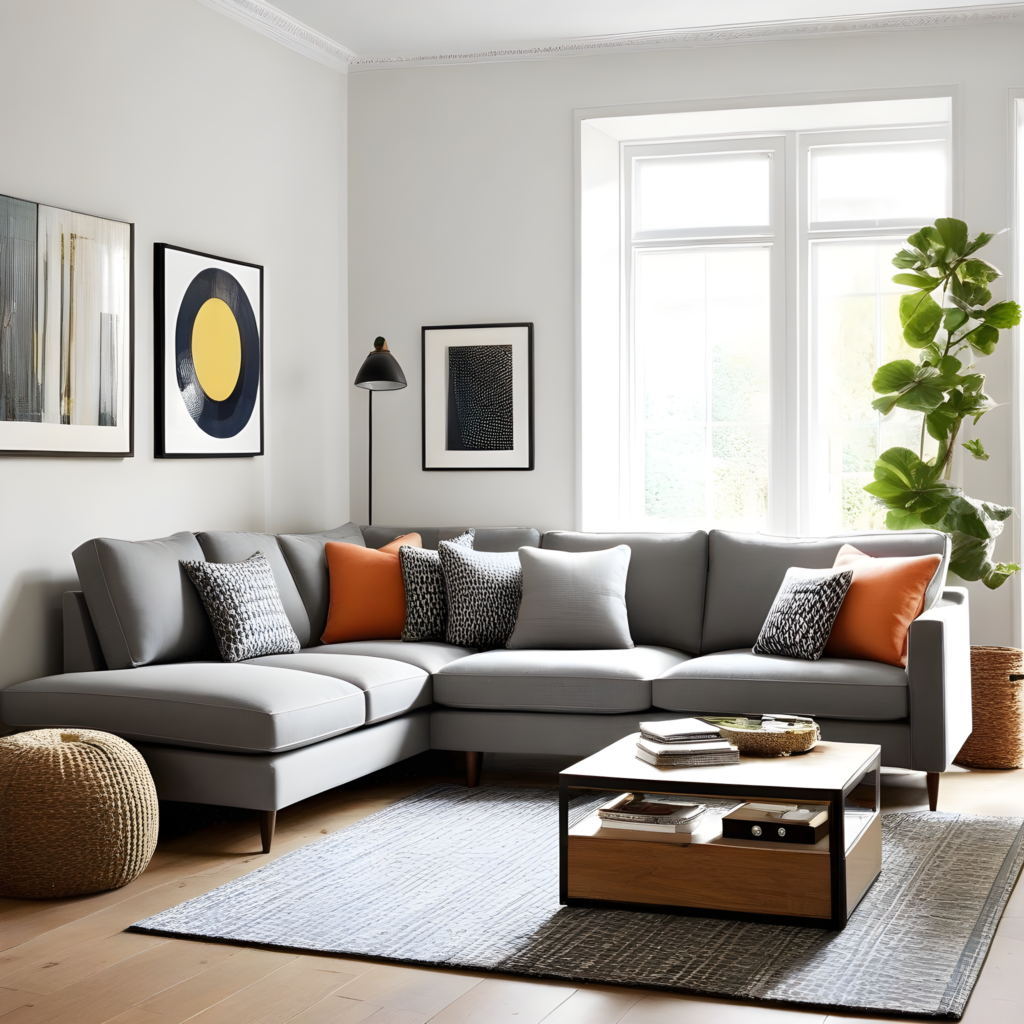
Small living spaces often require furniture that can adapt to changing needs and activities. Modular corner sofas offer the flexibility to rearrange the seating configuration, making them ideal for accommodating different guest counts or adapting to different activities.
Modular sofas typically consist of individual sections that can be easily moved and configured into various shapes, such as a chaise lounge, a U-shaped arrangement, or even a separate sofa and ottoman. This versatility allows homeowners to maximize space and functionality while adapting to various needs.
In addition to modular sofas, nesting tables or ottomans can be incorporated into the living space to provide additional flexibility. Nesting tables can be easily stacked or separated as needed, while ottomans can serve as additional seating or footrests and can be tucked away when not in use.
5. Prioritize Scale and Proportion
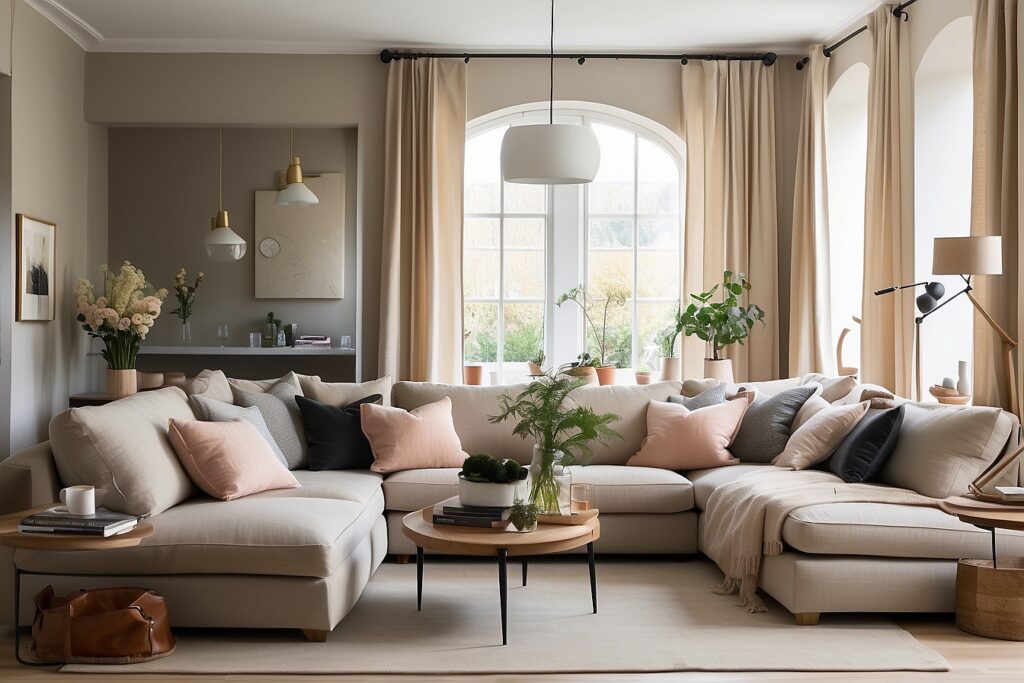
The size and scale of the corner sofa play a crucial role in maintaining a sense of balance and proportion in a small living room. Choosing a sofa that is too large can make the space feel cramped and overwhelming, while a sofa that is too small can get lost in the room and fail to create a cohesive seating arrangement.
To ensure a harmonious balance, the corner sofa should be proportionate to the overall size of the living room. The sofa should not extend too far into the room, blocking walkways or obstructing furniture placement. Additionally, the sofa’s height and width should complement the scale of other furniture pieces and architectural elements, such as windows and doors.
By carefully considering the scale and proportion of the corner sofa, homeowners can create a visually appealing and functional seating arrangement that maximizes space without sacrificing comfort or style.
6. Incorporate Storage Solutions

In a small living room, storage solutions become even more crucial, as every square foot of space needs to be utilized effectively. Corner sofas with built-in storage compartments can provide valuable space for storing blankets, pillows, throws, or other items that would otherwise clutter the room.
Lift-top ottomans are another excellent storage solution, offering a convenient place to hide away books, magazines, or remote controls. Storage benches can also serve as a comfortable seating option while providing additional storage space.
When selecting storage solutions, it is essential to choose pieces that complement the overall style of the living room. Opt for storage options that blend seamlessly with the décor and avoid overpowering the space with bulky or unattractive furniture.
7. Embrace Natural Light

Natural light is a precious commodity in any living space, and it is particularly important in a small room. By positioning the corner sofa in a way that allows for natural light to flow freely through the room, homeowners can create a bright and airy atmosphere that feels more spacious and inviting.
Avoid blocking windows or doorways with the corner sofa, as this can hinder the flow of natural light and make the room feel smaller and darker. Instead, position the sofa in a way that allows sunlight to filter through windows and illuminate the space.
If the corner sofa must be placed near a window, consider using sheer curtains or blinds that allow natural light to pass through while maintaining privacy. Sheer fabrics can also add a touch of elegance and softness to the room.
8. Accessorize with Purpose
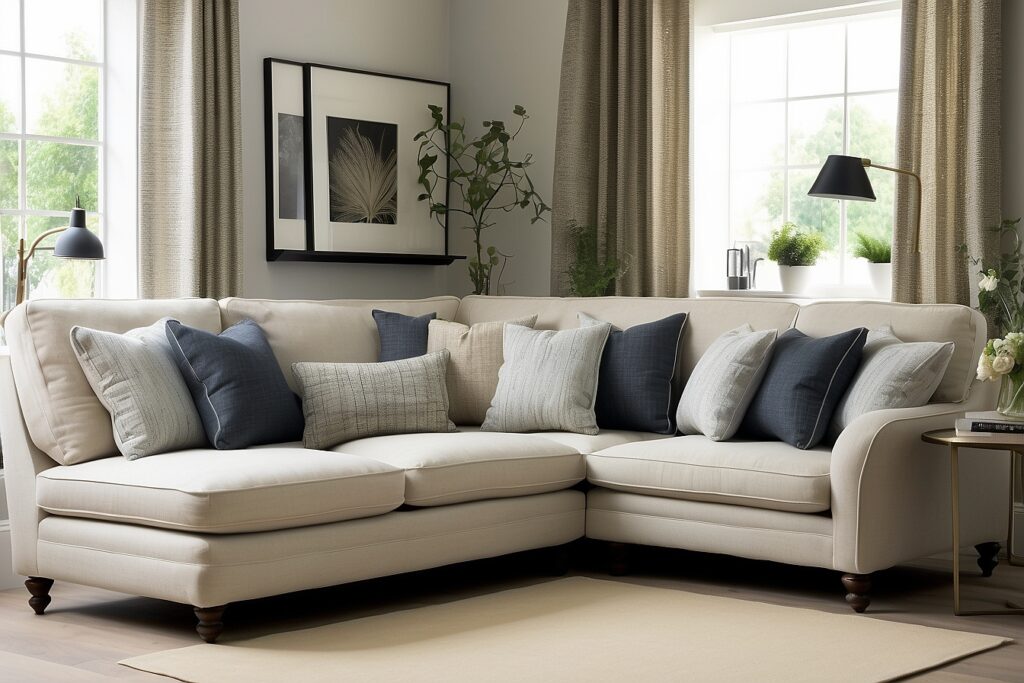
Accessorizing can elevate the style and functionality of the corner sofa and the overall living space. However, it is important to accessorize with purpose, avoiding clutter and ensuring that every item complements the overall design.
Throw pillows and blankets can add a touch of comfort and style to the corner sofa, while decorative accents, such as candles, vases, or sculptures, can add visual interest and personality to the space.
When selecting accessories, consider the color palette and style of the living room. Choose accessories that complement the existing décor and avoid introducing too many contrasting elements that could make the space feel disjointed.
9. Consider Traffic Flow
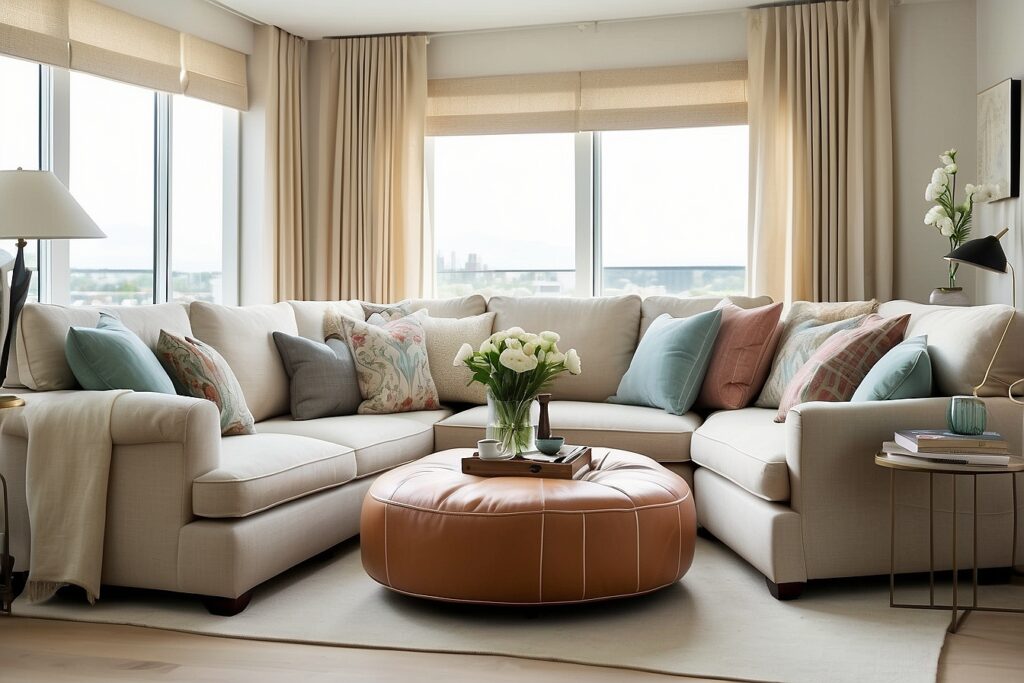
While creating a cozy and inviting seating arrangement is essential, it is equally important to ensure that the placement of the corner sofa does not obstruct or hinder movement within the living room. Maintaining adequate clearance around the sofa is crucial for easy navigation and comfortable seating.
Consider the layout of the room and the placement of other furniture pieces, such as coffee tables, armchairs, or entertainment units. Ensure that the corner sofa does not block pathways or make it difficult to access other areas of the room.
If the living room is frequently used for gatherings or parties, consider the amount of space needed for people to move around freely. Avoid placing the corner sofa in a way that creates bottlenecks or makes it difficult for guests to navigate the space comfortably.
10. Personalize the Space
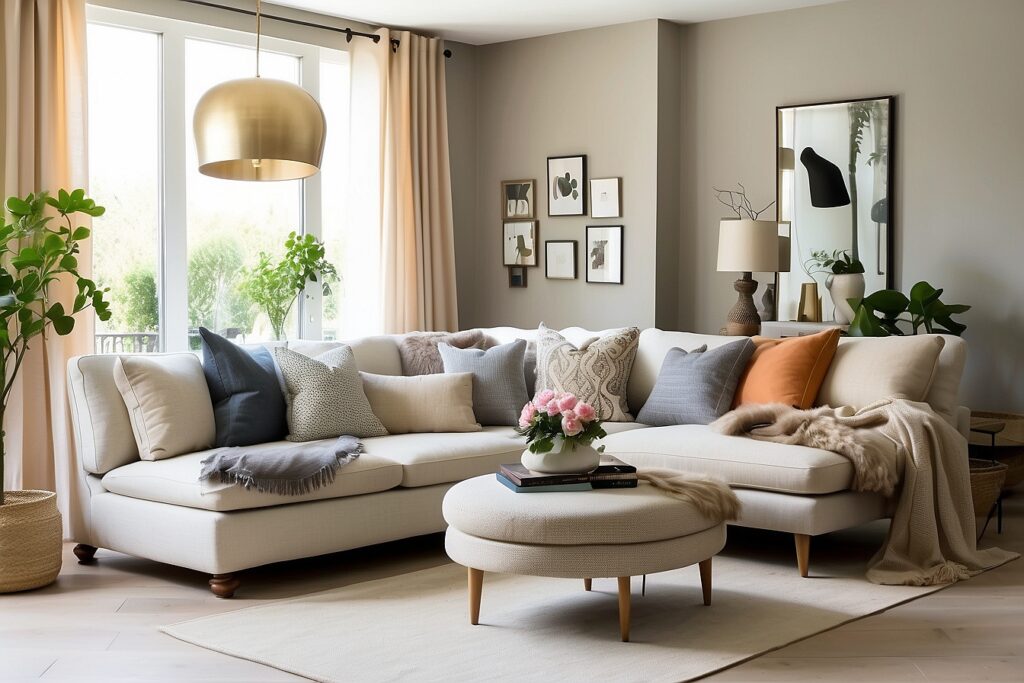
A small living room offers an opportunity to create a truly personalized space that reflects your unique style and preferences. While following design principles and maximizing functionality are important, don’t forget to add personal touches that make the space feel like your own.
Display artwork, family photos, or decorative objects that have special meaning to you. Incorporate colors and patterns that you love, and choose furniture and accessories that reflect your personality and taste.
By personalizing the space, you can transform a small living room into a cozy and inviting haven that truly reflects your unique style and sensibilities.
Conclusion
Arranging a corner sofa in a small living room requires careful consideration of various factors, including the room’s layout, the desired ambiance, and the occupants’ lifestyle. By following the principles outlined in this guide, homeowners can create a functional, stylish, and inviting seating arrangement that maximizes space and enhances the overall living experience.







